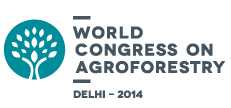Coffee plantations are expanding fast at the cost of disrupting ecological systems. Coffee Agroforestry System (AFS) seem to have positive impact on environmental services; or do they?
Kodagu, located in the Western Ghats in India, produces 2% of the world’s coffee. The Western Ghats is one of the top ten biological hotspots in the world; over 137 species of mammals and 508 species of birds can be found here, including a sizeable population of majestic elephants.
Over the last 30 years, coffee has expanded tremendously in the region to the detriment of the forest and its dwellers.
The intensification of coffee cultivation is also leading to the removal of shade trees which is directly linked not only to better growth of coffee but also to numerous ecological benefits.
Water is another critical resource affected. The main rivers which provides water all over Southern India, originate from these coffee areas of the Western Ghats.Western Ghats
The tree composition of this coffee landscape has been affected by changes in farmers’ management practices, such as irrigation to stimulate coffee mass flowering, or introduction of exotic tree species (mainly silky oak) for timber production and pepper.
Speaking at the World Congress on Agroforestry WCA2014, Philippe Vaast, an eco-physiologist from ICRAF & CIRAD, said trees are important not only for providing shade but also for providing a microclimate for other organisms, but farmers are not adept at managing shade.
“The right amount of shade is important for coffee; too much or too little is harmful. This manipulation of shade is not done well or understood by farmers. A lot of work needs to be done in this area. ”
A project undertaken by ICRAF and partners studied for 3 years how the change in tree cover from predominantly native tree species to exotic species affected the water dynamics in coffee AFS of the Kavery watershed of Kodagu district, the most important coffee district of the region.
The research threw up a mixed bag of results: the native trees were better than exotics in terms of providing optimum shade and a better environment for coffee growth, but the exotic trees were superior in recharging aquifers.
According to Syam Viswanath, a scientist at Indian Council of Forestry Research & Education (ICFRE), two important factors have to be taken into account for coffee agroforestry system: yield and quality.
“The kind of tree a farmer finally plants on his farm is a result of many factors: growing speed, maintainability, robustness, economic value or simply its attractiveness to an elephant!”
By Nitasha Nair
Ms Nair is a Senior Communication Officer with the International Water Management Institute (IWMI) – India
Source: [via]
The World Congress on Agroforestry was held in Delhi, India, 10-14 February 2014, co-hosted by the World Agroforestry Centre, the Indian Council of Agricultural Research and the Indian Society of Agroforestry.


















